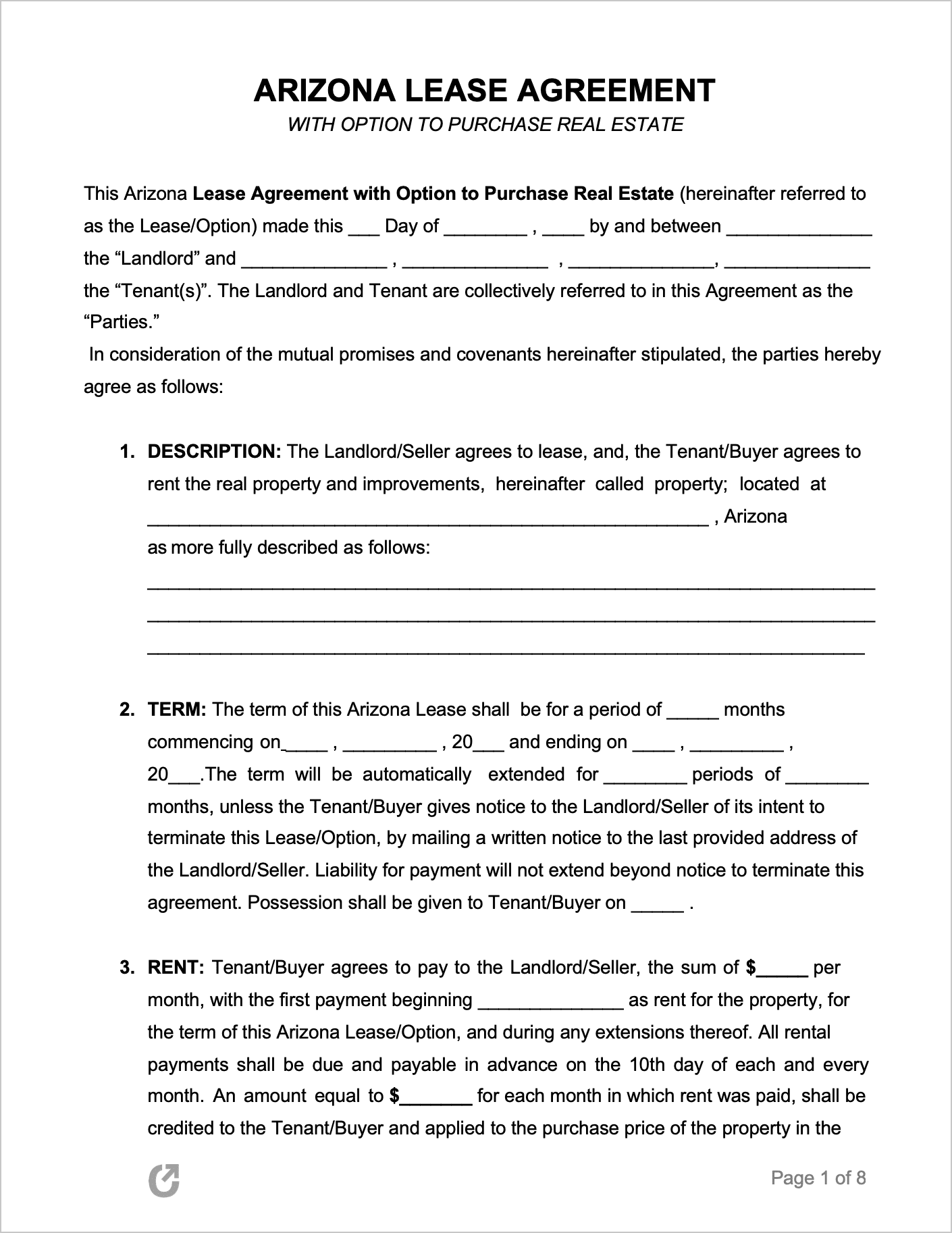Arizona Lease to Own Agreement
The Arizona Lease to Own lets a homeowner rent out their property as normal, with the added clause providing the tenant(s) with the ability to purchase the rental if they want. Because it includes provisions from both a lease and a purchase agreement, it is is longer and more complicated than a lease. However, a purchase agreement should still be used if the tenant(s) would like to execute on their option to buy. In a lease to own, the tenant will be required to pay higher rental payments, as a percentage (or set amount) will be set aside by the homeowner for a downpayment. The catch is that the tenants can only keep the downpayment if it’s used towards buying the home. The tenant(s) walk away? The property owner gets to keep the deposit. In addition to rent, the parties will often come to an agreement regarding utilities and maintenance – requiring the tenant(s) to handle this themselves puts less risk on the property owner AND gives the tenants a trial run on being a homeowner.
Required Disclosures
Alabama is a state that has “caveat emptor”, meaning the responsibility for finding issues with the property is on the buyer. While this is typically a benefit of the seller and a consequence for the seller, in a lease-to-own this problem reduces greatly. This is because the buyer (tenants) will have had several months/years to identify and fix any issues with the rental. Note: The seller is required by law to inform the buyer if they know of any health risks to the property, such as lead or black mold.
